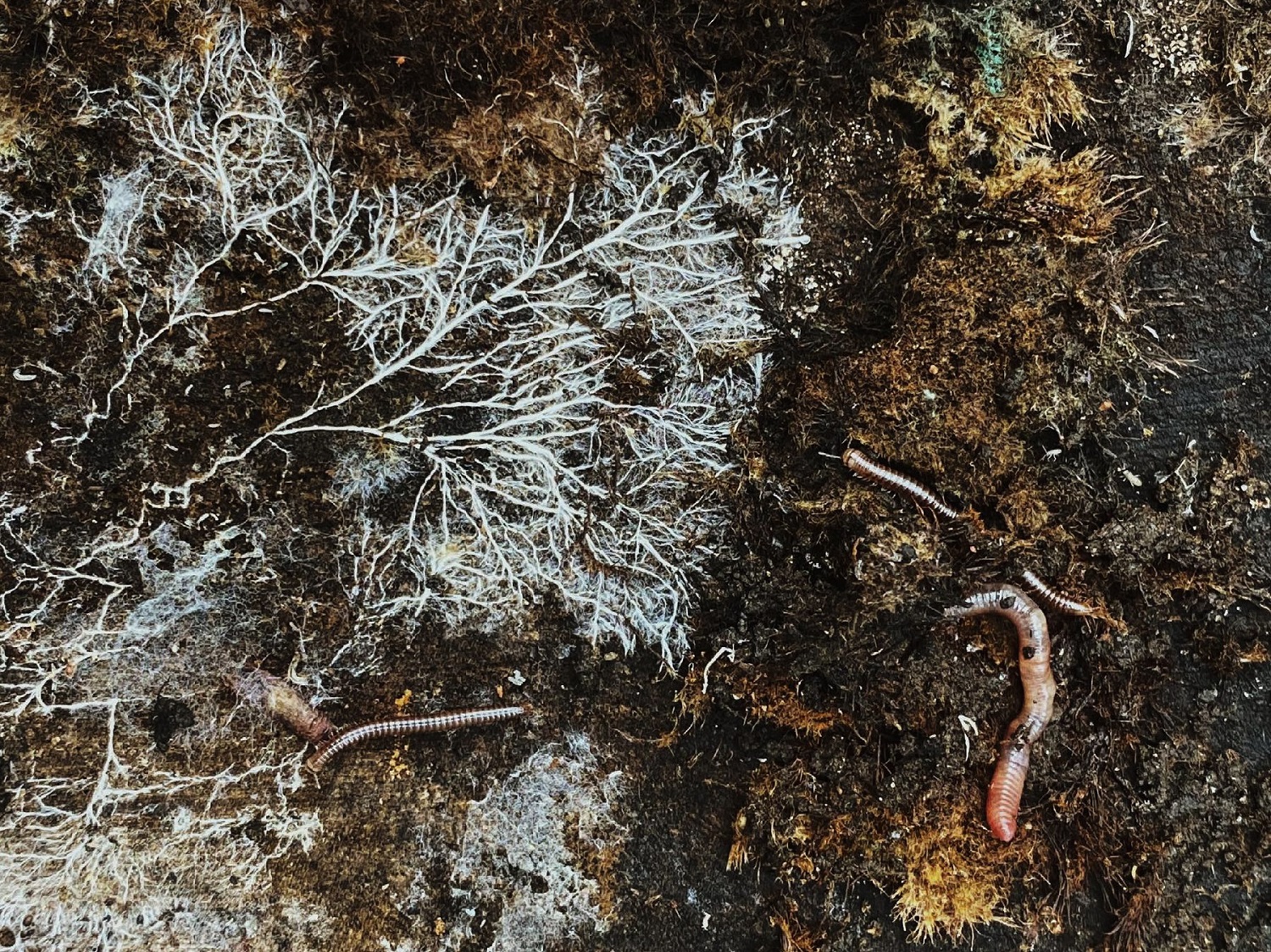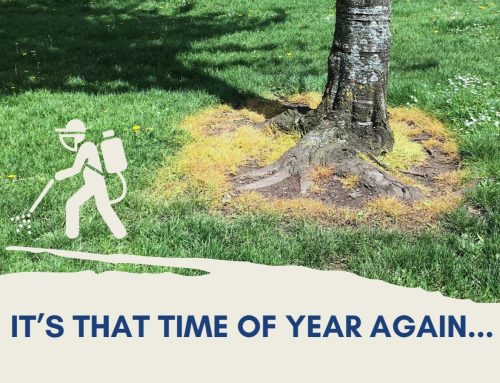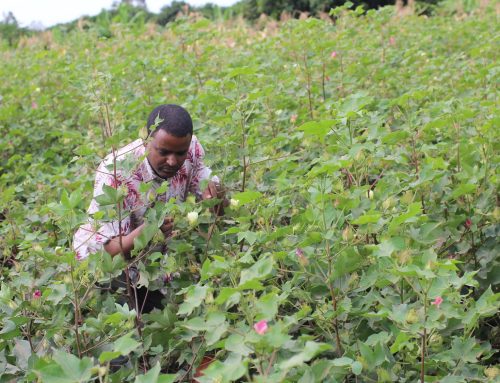by Tari Gunstone and Dr Aditi Dubey
Soils are incredibly biodiverse ecosystems, containing millions of organisms that provide essential services for our survival. Thanks to the busy work of these unsung heroes, we are fed, have filtered water and recycled waste, and our planet’s temperature is regulated.
Unfortunately, soils are also the final resting place for the majority of agricultural pesticides. While threats like decreasing insect populations, human health risks, and water contamination highlight the dangers of our reliance on pesticides, we are just beginning to understand the toll they take on the world underfoot.
With compiled data from nearly 400 studies conducted in both the lab and field, researchers from The Center for Biological Diversity, Friends of the Earth, and University of Maryland conducted the most comprehensive review to date on how pesticides affect soil invertebrates. Recently published in Frontiers in Environmental Science, our review, Pesticides and Soil Invertebrates: A Hazard Assessment, found that pesticides negatively affect soil invertebrates in 71% of cases. The harmful effects of pesticides on soil organisms ranged from molecular to community levels, including impacts on mortality, reproductive function, richness and diversity, abundance, behaviours like feeding, burrowing, and decomposition, growth, biochemical biomarkers, and body structure.
The biodiversity of our soils is vast, containing nearly a quarter of our planet’s taxa. We analysed the effects of pesticide on just a small percentage of these that spend all or most of their developmental stages in the soil, making them the most vulnerable to this route of pesticide exposure: 275 non-target species or mixed groups, including earthworms, ground beetles, springtails, centipedes, millipedes, nematodes, mites, isopods, ground nesting bees, and parasitic wasps.

Soil organisms. Credit: Tari Gunstone
Insecticides were predictably toxic, causing harm to invertebrates in 80% of cases. More surprisingly, other pesticides such as amide/anilide herbicides and benzimidazole and inorganic fungicides were among the most damaging pesticide classes overall. While our review covered a large number of pesticides currently not banned in the United States (284 different pesticide active ingredients or unique mixtures of pesticides), there are many commonly used pesticides and fumigants that have not been adequately represented in relevant soil studies and require further research.
In addition to the pesticides themselves, non-active ingredients in pesticide formulas fly under the regulation radar. Surfactants in Roundup were recently found to cause 94% mortality in bumble bees within 24 hours (Straw et al. 2021). Pesticides can also have long half-lives in the soil; with a recent large-scale study finding up to 16 different pesticide residues in soils after 20 years of organic production (Riedo et al. 2021).
Most agricultural pesticide regimens utilise a mix of pesticides throughout the year, leaving few windows of opportunity for soil communities to recover. While changes to pesticide delivery methods are increasingly utilised to reduce pollinator exposure, contamination of water sources and aerial deposition in neighbouring crops or residential areas, the switch from foliar spray to seed coating and soil drenching further increases exposure for soil organisms. Soil preservation strategies have focused on reduced or no tillage, which greatly benefits both soil invertebrates and soil structure, but often relies on increased herbicide application to kill cover crops, counteracting the benefits to soil organisms.
Oral pesticide toxicity for the European honey bee in the US increased 48-fold between 1992 and 2014, driven largely by increased neonicotinoid use in corn and soybean (Dibartolomeis et al. 2019). Given that virtually all neonicotinoid application in those crops is through seed treatments, toxicity for soil organisms is likely even higher (Lewis and Tooker, 2015). While neonicotinoid seed treatments are among the worst offenders in terms of pesticide impacts on soil invertebrates, they do not provide economic benefits in many, if not most cases (Tooker et al., 2017).
Despite the alarming extent of exposure of pesticides to soil organisms, soil organisms are not accounted for in pesticide risk assessment in the United States. While the European Food Safety Authority (EFSA) requires standard tests for several soil organisms (an earthworm, mite, and springtail species), the U.S. EPA uses the European honey bee as a proxy for all terrestrial invertebrates — needless to say, this is woefully inadequate. In the U.S., water and air receive regulated protection while soils are the forgotten sponge of our pollution.
The inextricable link between below and above ground communities means that hazards to soil invertebrates not only disrupt the important ecosystem services provided by healthy, diverse soil communities, but also indirectly impact the essential contributions of aboveground organisms, from pollination services to biological pest control. How much soil damage are we causing through our agricultural practices and what damage is irreversible? Scientists agree that it takes roughly 100 years to build just an inch of topsoil, while disturbed soil communities may require more than 15 years to recover (Menta, 2012). We must acknowledge that protecting soil organisms is vital for maintaining a healthy planet, and take urgent measures to halt the damage being done.
 Tari Gunstone worked as an environmental research assistant at the Center for Biological Diversity where she co-authored Pesticides and Soil Invertebrates: A Hazard Assessment.
Tari Gunstone worked as an environmental research assistant at the Center for Biological Diversity where she co-authored Pesticides and Soil Invertebrates: A Hazard Assessment.
 Dr Aditi Dubey is a PhD graduate in Entomology from the University of Maryland and an Entomological Society of America Science Policy Fellow. Her interests include Integrated Pest Management, sustainable agriculture and environmental justice.
Dr Aditi Dubey is a PhD graduate in Entomology from the University of Maryland and an Entomological Society of America Science Policy Fellow. Her interests include Integrated Pest Management, sustainable agriculture and environmental justice.





